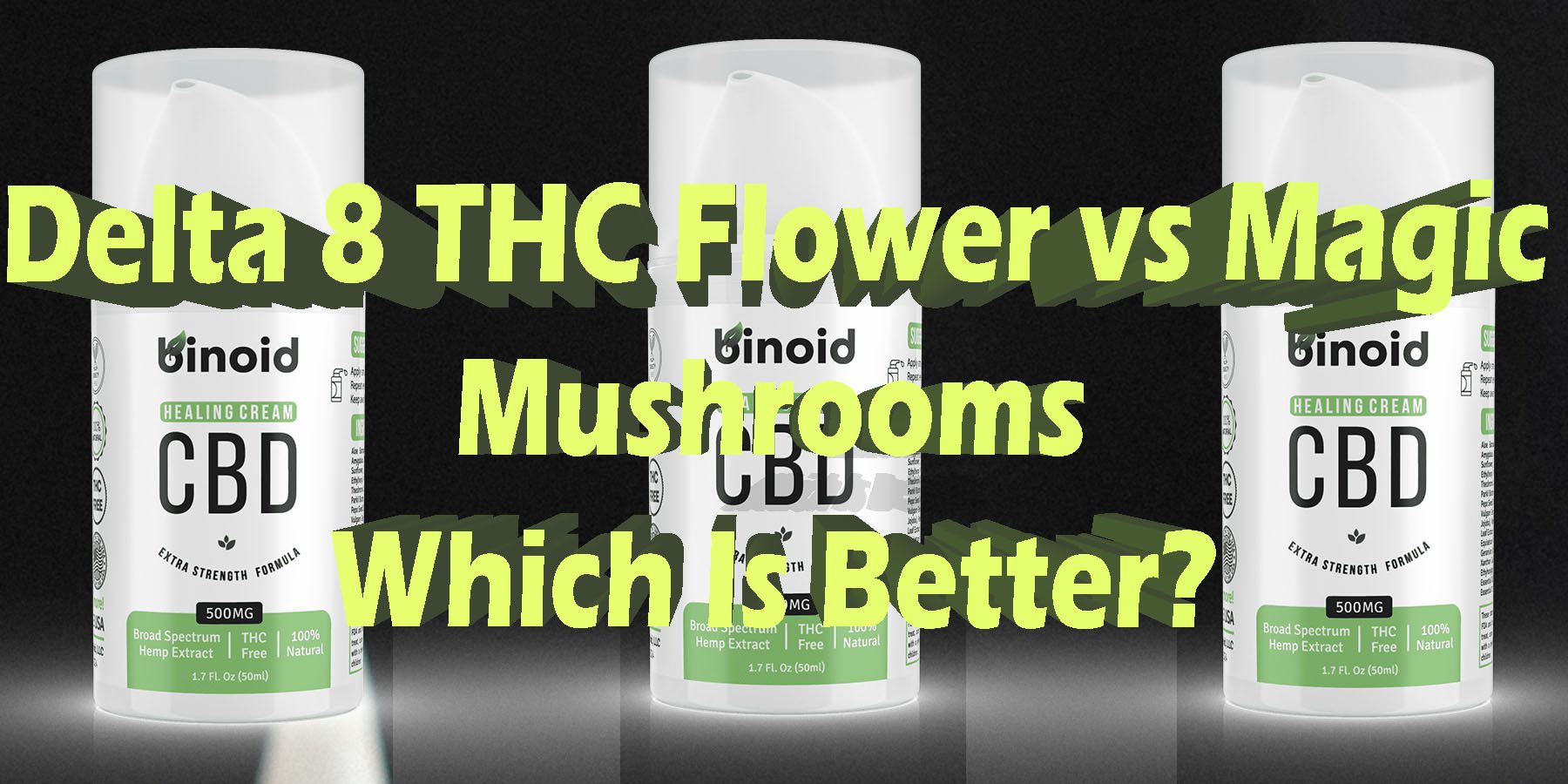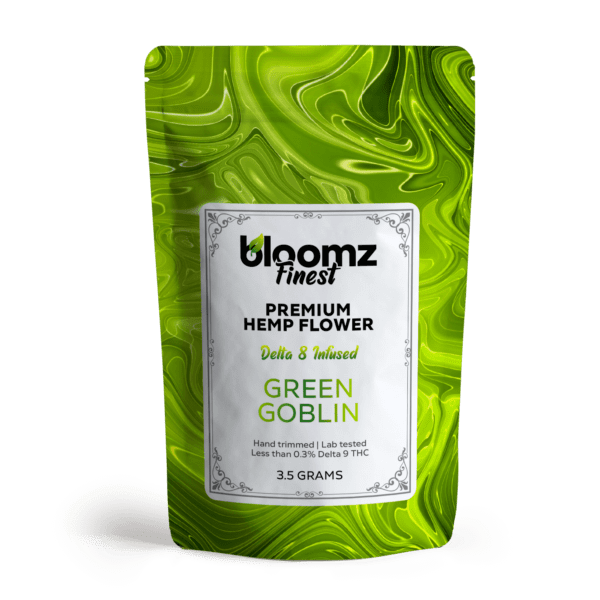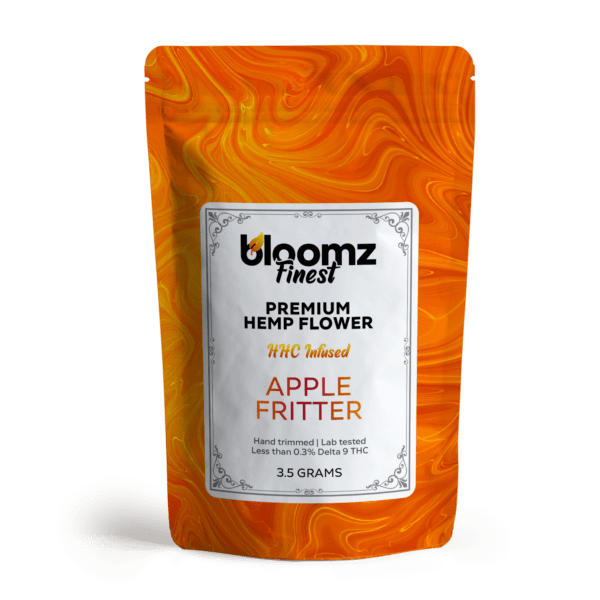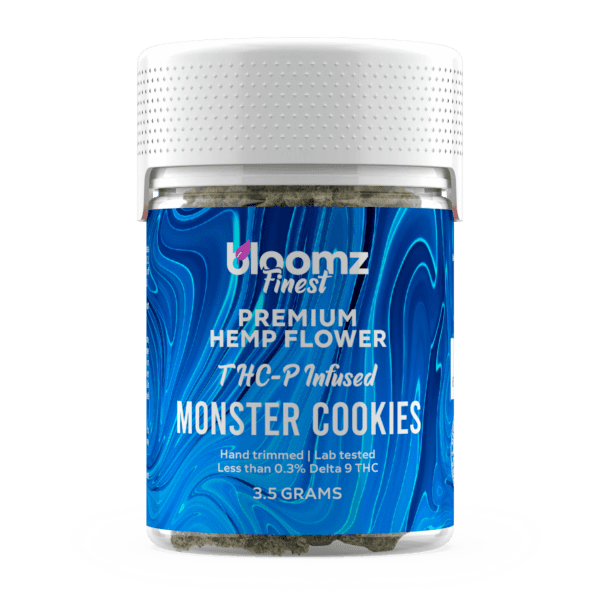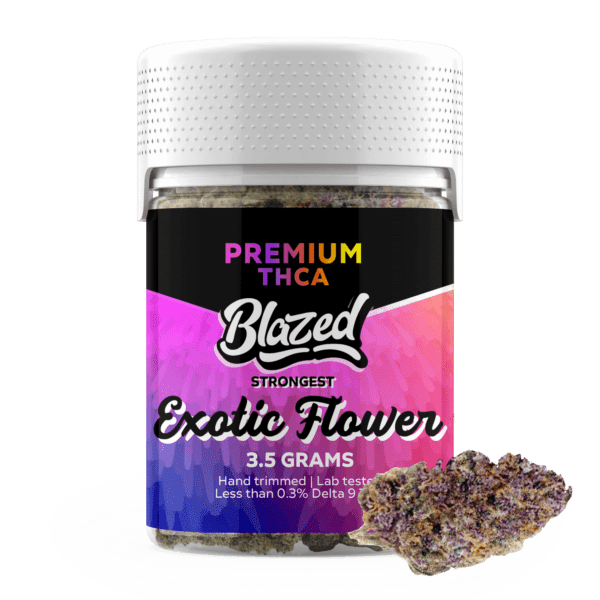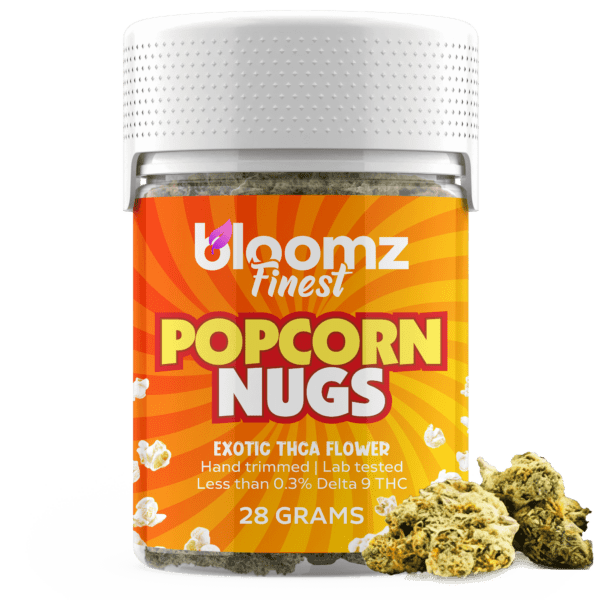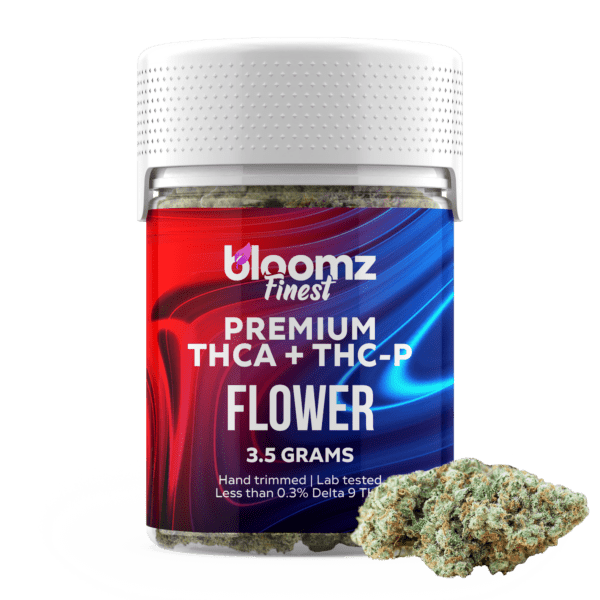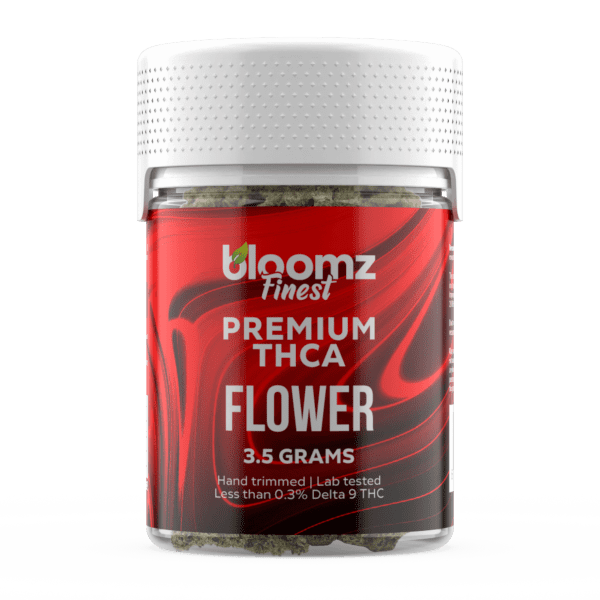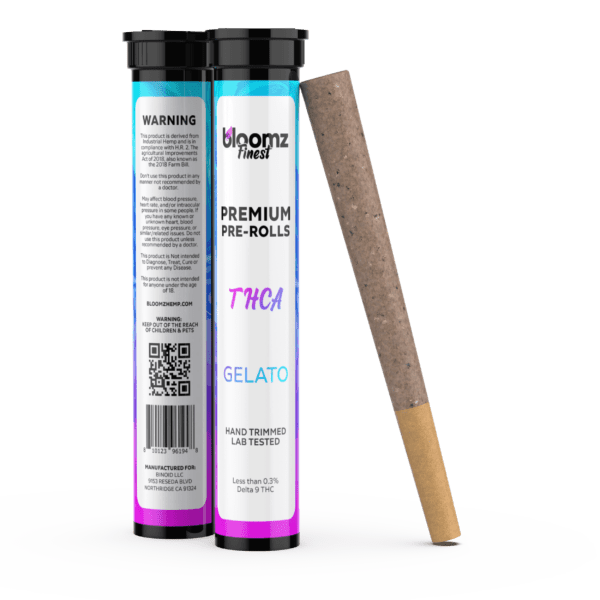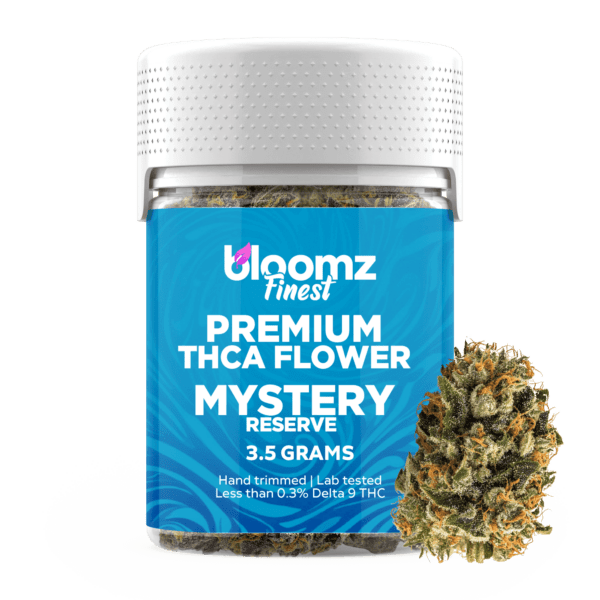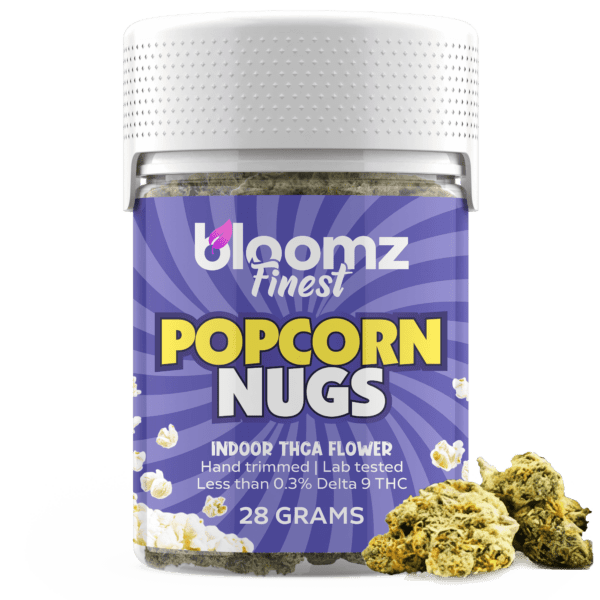In the intricate tapestry of consciousness exploration, humanity has long sought pathways to altered perception, sometimes for simple joy, sometimes for profound insight. The modern landscape, rich with both ancient wisdom and scientific innovation, presents a fascinating array of options for those curious about what lies beyond ordinary experience. Emerging from one corner is Delta 8 THC Flower, a testament to controlled botanical enhancement, offering a gentle and familiar ride into states of blissful relaxation. It speaks to a desire for a nuanced, manageable journey.
From another, deeper corner, often shrouded in historical reverence and natural mystery, come what are affectionately known as magic mushrooms, their unassuming forms holding the key to vibrant, expansive, and deeply introspective psychedelic voyages. This is not simply a comparison of two recreational substances; it’s an exploration of two fundamentally distinct blueprints for shifting perception—one a carefully engineered botanical experience, the other a wild, natural key to unlocking the mind’s inner cosmos.
TO BUY DELTA 8 THC FLOWER CLICK HERE
Recommended products
Why It’s Important to Breakdown the Matchup of Delta 8 THC Flower vs. Magic Mushrooms
In an increasingly diverse and accessible marketplace of consciousness-altering substances, the importance of clear, accurate, and deeply nuanced information cannot be overstated. The direct comparison of Delta 8 THC Flower and “magic mushrooms” is not merely academic; it is absolutely crucial for informed decision-making and, more importantly, for safety.
These two substances, while both capable of altering perception, operate on entirely different pharmacological principles, possess vastly different legal statuses, and offer experiences that are worlds apart in intensity and character. To conflate them, or to approach one with the expectations suitable for the other, would be a significant misstep, potentially leading to discomfort, distress, or legal complications.
The fundamental reason for this comparison being vital lies in their vastly divergent effects and mechanisms of action. Delta 8 THC flower, as a cannabinoid product, interacts with the body’s endocannabinoid system, primarily producing a milder, more clear-headed, and gently euphoric psychoactive experience akin to a relaxed cannabis high. The journey is often described as manageable, chill, and relatively predictable.
Magic mushrooms, conversely, contain psilocybin and psilocin, which are classic serotonergic psychedelics. They induce profound alterations in perception, thought patterns, and emotions, often leading to vivid visual experiences, deep introspection, shifts in one’s sense of self, and sometimes intense emotional catharsis. These are not merely stronger versions of Delta 8; they are qualitatively different experiences, demanding a completely distinct set of preparations, expectations, and personal readiness.
Furthermore, their legal standing is a critical point of divergence that consumers must fully grasp. Delta 8 THC flower operates in a contentious legal gray area, its legality derived from the 2018 Farm Bill but often challenged and banned at the state level. While widely available, its status is precarious and subject to change.
Magic mushrooms, however, remain classified as Schedule I controlled substances at the federal level in the United States, meaning they are explicitly illegal to possess, cultivate, or distribute under federal law. Despite some local decriminalization efforts, their overarching illegality carries significant risks. Understanding this difference is not just about legality; it’s about making choices that align with one’s personal comfort with legal risk.
Finally, a deep dive into this matchup allows us to appreciate the different contexts and intentions typically associated with each substance. Delta 8 THC flower is often sought for recreational relaxation, social enhancement, or mild creative stimulation, fitting comfortably into a casual setting.
Magic mushrooms, with their capacity for profound and sometimes challenging experiences, are more frequently approached with an intention for introspection, personal growth, spiritual exploration, or even therapeutic potential (though this is still largely in a research context). By clearly delineating these distinct paths, individuals can make choices that truly resonate with their personal goals, ensuring they select the right tool for the desired journey into altered states of consciousness.
Contender #1: Delta 8 THC Flower
Delta 8 THC flower has emerged as one of the most talked-about and innovative products in the modern hemp industry, representing a fascinating fusion of nature’s bounty and human scientific ingenuity. It offers a unique middle ground for those curious about the world of THC, providing a distinct experience that sets it apart from both traditional cannabis and non-intoxicating CBD flower. To the casual observer, a nug of Delta 8 THC flower looks and smells much like any other high-quality cannabis, boasting rich aromas and a crystalline sheen.
However, its true nature is more complex, as it is not a flower that grows naturally with high concentrations of Delta 8 THC. Instead, it is a meticulously crafted product, born from a multi-step process that begins with premium hemp and ends with a uniquely psychoactive final product. Its rise in popularity is a direct result of the 2018 Farm Bill, which created the legal space for hemp-derived cannabinoids and sparked a wave of innovation that brought Delta 8 THC to the forefront of the market.
At the heart of this product is Delta-8-Tetrahydrocannabinol, or Delta 8 THC – a cannabinoid and a close chemical cousin to the more famous Delta 9 THC, the primary psychoactive component in marijuana. Delta 8 THC is an isomer of Delta 9 THC, meaning they share the same chemical formula but have a slightly different atomic structure. The key difference lies in the placement of a specific double bond in their carbon chain; in Delta 8 THC, this bond is on the 8th carbon chain, while in Delta 9 THC, it is on the 9th.
This seemingly minor structural variance has a significant impact on how the molecule interacts with the body’s endocannabinoid system (ECS), particularly the CB1 receptors in the brain. Delta 8 THC binds to these receptors less strongly than Delta 9 THC, which is believed to be the primary reason for its characteristically milder, more manageable, and often clearer-headed psychoactive effects. Because Delta 8 THC occurs naturally in the cannabis plant in only minuscule, non-economical amounts, it must be created through a chemical conversion process in a laboratory setting.
Recommended products
The creation of Delta 8 THC flower is a sophisticated, multi-stage process that highlights the advanced capabilities of the modern hemp industry. It is crucial to understand that “Delta 8 THC flower” is not a strain of cannabis that naturally produces high levels of this cannabinoid. Instead, it is a high-quality hemp flower, typically rich in CBD or CBG, that has been enhanced with pure Delta 8 THC distillate. The quality of the final product depends heavily on the quality of both the starting hemp material and the precision of the infusion process. Allow us to elaborate:
-
Premium Hemp Flower Cultivation: The foundation of any good Delta 8 THC flower is a top-shelf CBD or CBG hemp flower. Expert cultivators grow terpene-rich, visually appealing, and potent hemp strains, often in controlled indoor environments to maximize quality. After harvesting, this flower is carefully dried and cured to preserve its natural aromas, flavors, and cannabinoid profile.
-
Delta 8 THC Isomerization: In a controlled laboratory environment, CBD isolate or distillate, which is extracted from legally grown hemp, is used as the starting material. This CBD undergoes a chemical process called isomerization. Using a combination of acids, solvents, and heat, chemists rearrange the molecules of CBD, converting them into Delta 8 THC distillate. This process requires significant expertise to ensure a pure and clean final product.
-
Distillate Application and Infusion: Once the potent Delta 8 THC distillate is created, it must be applied to the premium hemp flower. There are several methods for this, each with its own pros and cons. A common method is to lightly spray the flower with the heated, viscous distillate and then tumble it to ensure an even coating. Another method involves creating a powdered version by freezing the distillate and dusting it over the buds, sometimes along with CBD or CBG kief. More advanced techniques use a solventless cryo-infusion process to bind the distillate to the flower more deeply and evenly.
-
Third-Party Laboratory Testing: This final step is arguably the most important for consumer safety. Reputable brands will send a sample of the finished, infused flower to an independent, third-party lab. This lab tests not only for the potency of Delta 8 THC, CBD, and other cannabinoids but also for the presence of any residual solvents, pesticides, or heavy metals from the cultivation and conversion processes, ensuring the final product is both potent and safe for consumption.
The market for Delta 8 THC flower offers a growing variety of types and categories, primarily distinguished by the quality of the base hemp flower and the method of infusion. While not as diverse as the naturally grown THCA flower market, the options still allow consumers to choose a product that aligns with their preferences for aroma, potency, and convenience. Understanding these categories is key to navigating the Delta 8 THC space and selecting a high-quality product that will deliver a clean and enjoyable experience. The quality of the experience is directly tied to the craftsmanship involved in the flower’s creation:
-
Indoor Delta 8 Flower: This is considered the premium tier. The process starts with top-shelf, indoor-grown CBD or CBG hemp flower, which is known for its dense bud structure, vibrant appearance, and powerful terpene profile. This high-quality base flower is then infused with Delta 8 THC distillate. The result is a visually stunning and highly aromatic product that offers the most flavorful and potent experience, as the rich natural terpenes of the hemp flower work in synergy with the psychoactive effects of the Delta 8 THC.
-
Outdoor Delta 8 Flower: This category uses hemp flower that has been grown outdoors under the sun. Outdoor hemp is often more affordable and sustainable to produce, but the buds may be less dense and visually perfect than their indoor counterparts. When infused with Delta 8 THC, this flower provides a more budget-friendly option for consumers who are primarily focused on the effects of the cannabinoid rather than the connoisseur-level aesthetics and aromas of indoor-grown flower.
-
Delta 8 Smalls: Similar to other types of cannabis flower, “smalls” refer to the smaller, popcorn-sized buds that are separated from the larger colas during the trimming process. These smalls come from the same high-quality indoor or outdoor plants but are sold at a discount due to their size. Delta 8 Smalls offer an excellent value, providing the same potency and experience as larger buds at a more accessible price point.
-
Delta 8 Nugs: This is the standard form of Delta 8 THC flower, representing the well-formed, trimmed buds that are infused and sold as the primary product. The term “nugs” simply refers to the classic, ready-to-use flower form that consumers are most familiar with. The quality can range significantly based on whether the base hemp was grown indoors or outdoors.
-
Delta 8 Moonrocks: These are a specialty product created for those seeking maximum potency. A Delta 8 Moonrock is made by taking a nug of premium hemp flower, coating it in a sticky layer of potent Delta 8 THC distillate, and then rolling the entire thing in a thick layer of CBD or CBG kief (the concentrated trichomes of the hemp plant). The result is a dense, incredibly powerful product that delivers a trifecta of cannabinoid effects and is best consumed in a pipe or bowl.
-
Delta 8 Pre-Rolls, Blunts & Joints: For ultimate convenience, many brands offer pre-rolled products. These consist of ground Delta 8 THC flower neatly rolled into papers (joints) or hemp wraps (blunts), often with a filter tip included. They eliminate the need for any grinding or rolling, providing a simple, ready-to-use option that is perfect for on-the-go use or for sharing in social settings.
A common point of confusion in the Delta 8 THC flower market revolves around the use of well-known strain names like “OG Kush” or “Sour Diesel.” It is crucial to understand that these names refer to the genetic strain of the base hemp flower that was used before the Delta 8 THC was added. The overall effects of the final product are a synergistic blend of two key factors: the terpene profile of the original hemp strain (which dictates its Indica, Sativa, or Hybrid characteristics) and the overarching psychoactive effect of the Delta 8 THC itself. This combination allows for a nuanced experience where the foundational character of a classic strain is overlaid with the unique, clear-headed buzz of Delta 8:
-
Indica: When an Indica-dominant hemp strain, known for its relaxing and sedating terpene profile (often rich in myrcene), is used as the base for Delta 8 THC flower, the resulting product is geared towards deep relaxation and calm. The gentle, euphoric buzz of the Delta 8 THC combines with the naturally soothing qualities of the Indica terpenes, making it an excellent choice for evening use, unwinding after a long day, or settling into a state of chilled-out contentment and bodily comfort.
-
Sativa: A Sativa-dominant hemp strain, typically characterized by an uplifting and energizing terpene profile (often containing limonene or pinene), forms the basis for a more invigorating Delta 8 THC experience. The clear-headed, functional high of the Delta 8 is complemented by the stimulating nature of the Sativa terpenes. This combination is ideal for daytime use, creative pursuits, social activities, or any situation where a user desires a boost of euphoric energy without the potential for mental fog.
-
Hybrid: Hybrid hemp strains are crossbreeds of Indica and Sativa genetics, offering a balanced spectrum of effects. When infused with Delta 8 THC, these strains provide the best of both worlds. A Hybrid Delta 8 THC flower can deliver a pleasant, uplifting cerebral buzz coupled with a comfortable and relaxing body sensation, making it incredibly versatile. Depending on whether it is Sativa-dominant or Indica-dominant, it can be suitable for a wide range of activities at any time of day.
The legality of Delta 8 THC in the United States is one of the most contentious and rapidly evolving topics in the entire cannabinoid industry. Its legal standing originates from the 2018 Farm Bill, which legalized hemp and all its derivatives, extracts, and cannabinoids, as long as the final product contains less than 0.3% Delta 9 THC. Because Delta 8 THC can be derived from legal hemp (specifically from CBD), the industry has operated under the assumption that it is a legal hemp product.
However, this interpretation is heavily disputed. The Drug Enforcement Administration (DEA) has issued an Interim Final Rule suggesting that synthetically derived tetrahydrocannabinols are illegal controlled substances, and there is a fierce debate over whether the laboratory conversion of CBD to Delta 8 THC constitutes “synthesis.” In response to this ambiguity and concerns over the unregulated market, many states have taken matters into their own hands, explicitly banning or heavily restricting the sale of Delta 8 THC products. Therefore, while it may be accessible in some states, it is illegal in many others, and its federal status remains in a precarious state of uncertainty.
Recommended products
The purposes for using Delta 8 THC flower are centered around achieving a mild to moderate psychoactive experience, and the methods of consumption are largely identical to those for any other type of cannabis flower. The primary goal is to heat the flower, which vaporizes the infused Delta 8 THC distillate along with the natural cannabinoids and terpenes of the base hemp, allowing for inhalation and rapid absorption into the bloodstream. The choice of method often comes down to personal preference for flavor, smoothness, and convenience. Because it is an infused product, some users may notice a slightly different burn or vapor quality compared to an all-natural flower:
-
Vaping (using a portable or desktop vaporizer): Vaping is a highly popular method as it heats the flower to a precise temperature without combustion. This process releases the Delta 8 THC and terpenes as a vapor, which provides a smoother and more flavorful experience than smoking. Vaping allows users to better taste the nuanced terpene profile of the base hemp flower and offers a cleaner inhalation experience, avoiding the harsh byproducts of smoke.
-
Smoking: This is the classic and most straightforward method. It involves combusting the Delta 8 THC flower and inhaling the smoke, typically through a pipe, bong, or by rolling it into a joint or blunt. Smoking delivers a very rapid onset of effects, usually within minutes, and a robust, full-bodied experience. The high heat of combustion ensures that all the cannabinoids are activated instantly for a potent effect.
-
Cooking/Baking: Delta 8 THC flower can be used to make edibles. An interesting point here is that the Delta 8 THC distillate used for infusion is already decarboxylated (activated). However, the base hemp flower is not. Therefore, if a user wants to experience the full effects of the CBD or CBG in the base flower alongside the Delta 8, they would still need to decarboxylate the entire flower in an oven before infusing it into a fat like butter or oil for use in recipes. Edibles will produce a much stronger and longer-lasting effect with a delayed onset.
The overall effects of Delta 8 THC flower are what truly set it apart and have driven its immense popularity. Most users describe the experience as a significantly milder and more manageable version of a traditional Delta 9 THC high. The psychoactive buzz is present and noticeable, characterized by a pleasant sense of euphoria, an uplifted mood, and a warm, relaxing sensation that spreads throughout the body.
However, what makes it unique is its reported lack of intensity in the mental effects. Users frequently report a clear-headed, functional, and focused high, without the potential for the anxiety, paranoia, or mental fog that can sometimes accompany strong doses of Delta 9 THC. This makes it an appealing option for those who are sensitive to Delta 9, for beginners curious about THC, or for experienced users seeking a less intoxicating option for daytime use that allows them to remain productive and socially engaged.
Pros & Cons
When considering Delta 8 THC flower, it is essential to weigh its unique advantages against its notable drawbacks. This product’s profile is a direct result of its manufactured nature and its complex legal standing, creating a specific set of pros and cons that are crucial for any potential consumer to understand before making an informed decision.
Pros:
-
Milder, More Manageable Psychoactive Effects: The most celebrated advantage of Delta 8 THC is its gentle psychoactive profile. It offers a noticeable and enjoyable buzz without the overwhelming intensity that can sometimes come with Delta 9 THC, making it an excellent entry point for those new to THC or for users who prefer a less potent experience.
-
A Clear-Headed and Functional High: Users frequently report that the Delta 8 THC high is uniquely clear-headed, allowing them to feel euphoric and relaxed while still maintaining mental focus and clarity. This “functional” aspect makes it suitable for creative endeavors, social situations, or daytime use when productivity is still desired.
-
Lower Reported Incidence of Anxious Feelings: For individuals who are prone to feeling anxious or paranoid with Delta 9 THC, Delta 8 THC is often reported to be a much smoother experience. Its lower binding affinity for the CB1 receptors is thought to reduce the likelihood of inducing these unwanted mental side effects, leading to a more consistently pleasant journey.
-
Legal Accessibility in Certain States: Due to the 2018 Farm Bill, Delta 8 THC derived from hemp is legal to sell and possess in many states where recreational Delta 9 THC is not. This provides a legal avenue for individuals in those regions to access a psychoactive THC product through a recognized commercial channel.
-
Synergistic Combination of Compounds: Delta 8 THC flower offers a unique synergy between the infused psychoactive cannabinoid and the rich profile of the base hemp flower. The user experiences the effects of Delta 8 THC alongside the natural CBD, CBG, and terpenes of the hemp, which can contribute to a more well-rounded and nuanced entourage effect.
-
Wide Variety of Product Options: The market has matured to offer a broad selection of Delta 8 THC flower products. From different strains of base hemp (Indica, Sativa, Hybrid) to various product forms like moonrocks and pre-rolls, consumers have a great deal of choice to tailor their experience to their specific preferences.
-
Generally More Affordable: In many markets, Delta 8 THC products are more affordable than their Delta 9 THC counterparts found in state-licensed recreational dispensaries. This price difference can make it a more accessible option for budget-conscious consumers seeking a THC experience.
-
Rapid Onset of Effects When Inhaled: Like any smokable flower, Delta 8 THC flower provides a very fast onset of effects, typically felt within minutes of smoking or vaping. This allows users to easily gauge the effects and titrate their dose, taking a small amount and waiting to see how they feel before consuming more.
-
Pleasant Body Sensation: Many users report that Delta 8 THC provides a particularly enjoyable and soothing body high. It can induce a profound sense of physical relaxation and comfort without being overly sedating, making it great for unwinding and releasing physical tension.
-
Flavorful Experience from Terpenes: Because high-quality Delta 8 THC flower uses premium, terpene-rich hemp as its base, the smoking or vaping experience can be incredibly flavorful and aromatic. This allows users to enjoy the complex taste profiles of famous cannabis strains in a new and legally accessible format.
Cons:
-
Highly Contentious and Unstable Legal Status: This is the most significant drawback. Despite its origins in the Farm Bill, many states have banned Delta 8 THC, and its federal legality is under intense scrutiny from the DEA. The legal landscape is a confusing and rapidly changing patchwork, placing consumers at risk of unknowingly violating state laws.
-
Lack of Regulation and Potential Safety Concerns: The Delta 8 THC market is largely unregulated, leading to a wide variance in product quality and safety. The chemical conversion process used to create the distillate can leave behind harmful residual solvents if not performed and purged correctly. It is absolutely crucial to purchase only from reputable brands that provide comprehensive, up-to-date third-party lab reports.
-
It is a Manufactured, Not a Natural, Product: For cannabis purists, the fact that Delta 8 THC flower is an infused or coated product is a major con. It lacks the authenticity of a naturally grown flower, and the application of the distillate can sometimes be uneven, sticky, or harsh to smoke compared to an untouched, natural bud.
-
Will Likely Cause a Failed Drug Test: Despite being federally legal in some places and milder than Delta 9, Delta 8 THC is still a tetrahydrocannabinol. It will be metabolized by the body into compounds that are indistinguishable from Delta 9 metabolites on standard drug tests. Using Delta 8 THC will almost certainly result in a positive test for THC.

Contender #2: Magic Mushrooms
Emerging from the earth, often in the most unassuming and humble of forms, “magic mushrooms“—primarily species from the Psilocybe genus—are fungi that have held a profound and revered grip on human consciousness for millennia. Far from being a mere recreational curiosity, these organisms have been venerated as sacred entheogens (substances that “generate the divine within”), spiritual guides, and powerful keys to unlocking the hidden dimensions of the mind across diverse cultures and throughout the annals of human history.
Their modest appearance, often just small, brown fungi, stands in stark contrast to the immense and vibrant inner cosmos they are capable of revealing. Their story is one intertwined with ancient shamanism, modern scientific inquiry, and a global reawakening to their potential for profound personal exploration, insight, and a fundamental re-framing of one’s perception of self and the universe. They are not simply about “seeing things”; they represent a pathway to experiencing reality in a profoundly different way.
The term “magic mushrooms” refers to a polyphyletic group of fungi that contain psilocybin and psilocin. Psilocybin is the primary psychoactive compound, but it is actually a prodrug. Once ingested, the body metabolizes psilocybin into psilocin, which is the compound directly responsible for the profound psychedelic effects. Psilocin primarily acts as a partial agonist at serotonin 5-HT2A receptors in the brain. This interaction is believed to lead to a significant increase in functional connectivity across brain networks that are normally quite segregated, effectively allowing different parts of the brain to communicate more freely.
This widespread communication is thought to be the basis for many of the characteristic psychedelic effects, such including intensified emotions, vivid sensory distortions, synesthesia (mixing of senses), and a powerful sense of unity or spiritual connection. Unlike cannabis, which modulates existing brain functions, psilocin acts more like a reset button, temporarily disrupting established patterns of thought and perception.
The history of “magic mushrooms” is as rich and ancient as human civilization itself, stretching back thousands of years and spanning continents. Archaeological evidence, such as mushroom iconography found in ancient rock art in the Sahara Desert dating back 7,000 to 9,000 years, suggests their use in spiritual and ceremonial contexts is deeply prehistoric. Cultures in Mesoamerica, particularly the Aztec and Mayan civilizations, revered psilocybin-containing mushrooms, which they called “teonanácatl” (flesh of the gods). These mushrooms were integral to their religious rituals, divination, and healing practices, believed to facilitate communication with deities and provide profound insights.
Their use was documented by Spanish chroniclers in the 16th century, though subsequently suppressed by the conquering Europeans. In modern history, the Western world was largely reintroduced to “magic mushrooms” in the 1950s through the work of mycologist R. Gordon Wasson, who documented his experience with psilocybin mushrooms among the Mazatec people of Oaxaca, Mexico, and brought the story to Life magazine. This marked the beginning of modern scientific and cultural interest, leading to a period of intense research in the 1960s, followed by prohibition, and now a resurgence of scientific and public interest in the 21st century.
The ways in which magic mushrooms can be consumed have evolved beyond simply eating dried caps, reflecting both a desire for convenience and attempts to mask their often earthy or bitter taste. While the raw or dried form remains the most traditional, modern ingenuity has led to the development of various product types, particularly in regions where decriminalization or legal frameworks are emerging. These products aim to offer a more palatable and sometimes more precisely dosed experience, making the profound effects of psilocybin accessible to a broader audience while still demanding the same respect for their inherent power:
-
Powder: Dried magic mushrooms can be ground into a fine powder. This form is particularly versatile, as it can be easily encapsulated, mixed into beverages (like “lemon tek” for faster onset), or incorporated into food items. Grinding the mushrooms helps to create a more homogeneous product, which can lead to more consistent dosing compared to eating whole, variably sized pieces. However, the strong taste can still be noticeable when mixed into liquids or certain foods.
-
Edibles: This is one of the most popular modern forms, especially where magic mushrooms are decriminalized or legally available. Manufacturers extract the psilocybin and psilocin and infuse them into various edible products like gummies, chocolates, or other confections. These edibles not only completely mask the mushroom’s taste but also offer the significant advantage of precise, pre-measured dosing, making the experience more predictable and approachable for users who might be intimidated by whole mushrooms.
-
Disposable Vapes: This is a very new and still highly experimental category, with limited scientific research. Some products claim to contain synthetic psilocin or other psychoactive compounds extracted from mushrooms that can be vaporized. However, the efficacy, safety, and long-term effects of inhaling these compounds are largely unknown, and this method is not widely recognized or supported by the established psychedelic community. Extreme caution is warranted, and this is generally not a recommended method of consumption.
-
Tinctures: Tinctures involve extracting the active compounds of magic mushrooms into a liquid, typically alcohol. These concentrated liquids are then administered sublingually (under the tongue) using a dropper, allowing for relatively rapid absorption into the bloodstream. Tinctures offer a high degree of dosage control and can be a more discreet method of consumption, though the taste can still be strong for some users.
-
Capsules: For those who prioritize discretion and taste-free consumption, capsules are an ideal choice. They contain precisely measured amounts of dried, ground mushroom powder or an extracted psilocybin/psilocin compound. Capsules offer the ultimate convenience and ensure consistent dosing without any of the mushroom’s natural flavor, making them popular for micro-dosing or for those who simply prefer a straightforward method of ingestion.
The concept of combining “magic mushrooms” with cannabinoids and even live terpenes is an emerging area of interest for those seeking to fine-tune the psychedelic experience. While the core effects of psilocybin are profound on their own, other compounds can potentially modulate the journey. For instance, some users might combine psilocybin with CBD, hoping that the non-intoxicating cannabinoid could help to ground the experience, smooth out potential feelings of overwhelm, or contribute to a sense of calm during the introspective process.
The addition of Delta 8 THC might be considered by those looking to introduce a gentler, more relaxing body sensation or a mild layer of euphoria to complement the mental aspects of the psilocybin. Live terpenes, extracted from cannabis or other aromatic plants, could theoretically be introduced not only for flavor but also to potentially steer the mood or “vibe” of the trip through their own aromatic and subtle physiological effects, leveraging the concept of the entourage effect, although rigorous scientific study on these specific combinations is still in its nascent stages.
The current legality of “magic mushrooms” in the United States stands in stark contrast to that of THCA flower. Federally, psilocybin and psilocin are classified as Schedule I controlled substances under the Controlled Substances Act. This means they are deemed to have a high potential for abuse and no currently accepted medical use, making their cultivation, possession, and sale illegal nationwide. However, the legal landscape is slowly but significantly shifting. Several cities, including Denver, Oakland, Santa Cruz, and Ann Arbor, have decriminalized psilocybin, making its possession the lowest law enforcement priority.
Furthermore, the state of Oregon has legalized psilocybin for supervised therapeutic use within a regulated framework, and Colorado has followed suit. Other states are exploring similar paths, moving towards decriminalization or controlled medical access. Despite these progressive local and state-level changes, the federal prohibition remains firmly in place, creating a complex and evolving legal environment where federal and local laws can be in direct conflict, making understanding one’s specific local jurisdiction absolutely critical.
The overall effects of magic mushrooms are profoundly psychedelic, offering a vastly different and more immersive kind of altered state compared to the relatively lucid high of Delta 8 THC flower. The experience, or “trip,” typically begins within 30-60 minutes of ingestion and unfolds over 4 to 8 hours, often in distinct phases. The initial “come-up” can be characterized by physical sensations, sometimes including nausea or a “body load,” as perception begins to shift. At the “peak,” the user is fully immersed in the psychedelic state, which is marked by a significant alteration of sensory input. Colors may appear more brilliant, surfaces may seem to breathe or flow, and intricate geometric patterns can manifest, especially with closed eyes.
The user’s internal landscape is equally transformed; thought processes become more fluid and associative, often leading to profound and unexpected insights. Emotions are amplified, and a user may experience everything from overwhelming bliss and awe to deep introspection and the processing of difficult memories. A hallmark of a strong experience is “ego dissolution,” a temporary loss of the sense of a separate self, leading to a powerful feeling of being interconnected with everything. The entire journey is deeply subjective and profoundly influenced by one’s mindset (“set”) and physical environment (“setting”), making preparation and intention key components of the experience.
Pros & Cons
Delving into the world of magic mushrooms reveals a complex interplay of potential benefits and significant challenges. Their profound effects, ancient history, and contentious legal status create a unique profile that demands careful consideration. Weighing these pros and cons is essential for anyone contemplating an encounter with these powerful fungi, ensuring a journey undertaken with deep respect and thorough understanding.
Pros:
-
Profound Psychedelic Experiences: For individuals seeking deep introspection, spiritual exploration, or profound shifts in perspective, magic mushrooms offer a uniquely powerful psychedelic journey. They can facilitate intense emotional releases, vivid visual and auditory alterations, and a profound sense of interconnectedness, often leading to what users describe as life-changing insights.
-
Potential for Deep Personal Exploration: Unlike the more recreational effects of Delta 8 THC, magic mushrooms are often approached with an intention for serious self-exploration. Their capacity to temporarily dissolve ego boundaries and alter habitual thought patterns can provide individuals with a fresh perspective on their lives, relationships, and place in the world, fostering a sense of wonder.
-
Rich Historical and Cultural Significance: Engaging with magic mushrooms connects one to an unbroken lineage of human interaction with these fungi, stretching back millennia. Their use in ancient shamanic and spiritual practices across various cultures imbues them with a deep historical weight and cultural reverence, making the experience feel part of a timeless tradition.
-
Natural Origin: For those who prioritize natural substances, magic mushrooms are a product of the earth, growing organically without the need for lab-based conversions or infusions. This natural purity is appealing to users who seek an unadulterated botanical experience, untainted by industrial processes.
-
Long-Lasting Effects: The effects of magic mushrooms typically last for several hours, providing an extended period for introspection and exploration. This longer duration allows for a more immersive experience compared to the shorter-acting effects of many inhaled cannabis products, which can be advantageous for intentional, structured sessions.
-
Unique Alteration of Perception: Magic mushrooms create a distinct altered state of consciousness that is qualitatively different from the effects of cannabinoids. They engage different neural pathways, leading to a unique sensory and cognitive experience that can be highly novel and stimulating for those seeking new forms of perception beyond the familiar.
-
Growing Decriminalization Movement: While federally illegal, a burgeoning movement for decriminalization and regulated access for therapeutic use is gaining traction in various cities and states. This evolving landscape reflects a growing societal recognition of their potential value and may offer more pathways for legal engagement in the future, providing a glimmer of hope for broader access.
Cons:
-
Federal Illegality: The most significant and immediate drawback is the federal Schedule I classification of psilocybin and psilocin. This means that possession, cultivation, and sale are illegal under federal law, carrying substantial legal risks including fines and imprisonment, despite some local decriminalization efforts.
-
Intense and Potentially Overwhelming Experience: Magic mushrooms can induce profoundly intense and sometimes challenging experiences. While often insightful, these can include periods of anxiety, confusion, or fear, particularly at higher doses or in uncontrolled environments. The intensity can be overwhelming for some, leading to what is commonly referred to as a “difficult trip.”
-
Unpredictable Dosage and Potency: The potency of magic mushrooms can vary significantly from strain to strain, batch to batch, and even within different parts of the same mushroom. This inherent variability makes accurate dosing difficult, especially when consuming raw or unprocessed mushrooms, increasing the risk of an unintendedly intense experience.
-
Risk of Misidentification: In nature, many species of wild mushrooms are deadly poisonous. Misidentifying a magic mushroom for a toxic one can have fatal consequences. This inherent risk makes foraging for magic mushrooms extremely dangerous for untrained individuals and underscores the importance of sourcing from trusted, knowledgeable channels, though this itself carries legal risk.
How to Go About Choosing Which Option
The decision between Delta 8 THC flower and magic mushrooms represents a fundamental fork in the road for anyone exploring altered states of consciousness. These are not merely different products; they are gateways to entirely distinct realms of experience, each demanding a unique level of preparation, respect, and understanding. The “right” choice is not about objective superiority, but about a deep, honest self-assessment of your intentions, your personal comfort with varying intensities of altered perception, and your willingness to navigate vastly different legal and experiential landscapes.
Firstly, consider the type of experience you are genuinely seeking. If your intention is to unwind, relax, foster gentle euphoria, or engage in social activities with a clear-headed buzz, Delta 8 THC flower is the more appropriate choice. It offers a milder, more manageable psychoactive effect that generally enhances the present moment without fundamentally altering reality. However, if you are drawn to profound introspection, vivid sensory and cognitive alterations, a deep emotional journey, or a potentially transformative shift in perspective, then magic mushrooms align with that more serious pursuit. This is a journey that often transcends mere recreation and can lead to deeply personal insights.
Secondly, critically evaluate your personal experience level and your comfort with intense psychological states. Delta 8 THC flower is generally considered an entry-level cannabinoid, suitable for beginners (with responsible low dosing) and experienced users alike who prefer a gentler effect. Magic mushrooms, conversely, are powerful psychedelics. They are not for the faint of heart, the unprepared, or those new to altered states. They demand a stable mental state, a safe and supportive “set and setting,” and a willingness to confront potentially challenging emotions or perceptions. If you have no prior experience with psychedelics, magic mushrooms are likely too profound a leap.
Finally, once again, the legal implications are a non-negotiable factor. Delta 8 THC flower, while in a legal gray area, is widely sold in many states due to its hemp derivation, albeit with state-specific bans. This means it is often commercially accessible through regulated channels where it is allowed. Magic mushrooms, on the other hand, are federally illegal in the United States, classified as a Schedule I substance. This stark legal difference carries significant personal risk for possession, cultivation, or distribution, making it an entirely different proposition than the legally ambiguous Delta 8. Your choice must reflect your comfort with engaging with federally prohibited substances.
|
Feature |
Delta 8 THC Flower |
Magic Mushrooms (Psilocybin) |
|---|---|---|
|
Primary Compound |
Delta 8 THC (psychoactive cannabinoid) |
Psilocybin / Psilocin (classic psychedelic) |
|
Origin |
Manufactured (Hemp flower infused with lab-converted Delta 8 distillate) |
Natural (Fungi that produce psychoactive compounds) |
|
Typical Experience |
Mildly psychoactive, euphoric, clear-headed “high,” relaxing body buzz |
Profound psychedelic, vivid visuals, deep introspection, ego dissolution |
|
Intensity |
Mild to Moderate |
Moderate to Extremely High |
|
Target User |
Adults of all experience levels (with responsible dosing for novices). |
Experienced adults; beginners must exercise extreme caution. |
|
Federal Legal Status |
Contentious; derived from legal hemp but legality is debated by DEA. |
Illegal (Schedule I Controlled Substance) |
|
Primary Risks |
Legal ambiguity, unregulated market quality, potential for failed drug tests. |
Federal legal penalties, overwhelming experience, misidentification (if foraged). |
|
Predictability |
Relatively high and predictable. |
Variable; highly influenced by “set and setting.” |
|
Onset/Duration |
Rapid onset (minutes), lasts 1-3 hours (inhaled). |
Slower onset (30-60 min), lasts 4-8 hours. |
|
Use Case |
Relaxation, social settings, mild creative enhancement, functional use. |
Deep introspection, spiritual exploration, personal growth, therapeutic potential (research context). |
The Call of the Journey
The landscape of consciousness is vast, offering countless paths to explore the depths of perception. Whether one seeks the gentle, familiar embrace of Delta 8 THC flower or the profound, boundary-dissolving voyage of magic mushrooms, the true essence of the journey lies in the intention and the wisdom brought to the experience. One offers a stroll through a manicured garden of delight, a predictable and pleasant diversion; the other invites a trek through an untamed wilderness, promising a panoramic view of the inner universe but demanding courage, humility, and careful navigation. The most enriching explorations are those chosen with a clear mind and an open heart, understanding fully the nature of the path ahead.
TO BUY DELTA 8 THC FLOWER CLICK HERE
Recommended products
-
THCA Flower – Indoor Exotics – Gold Line
$37.99$69.99 -
THCA Flower – Mystery Reserve
$41.99$79.99 -
THCA Flower – Platinum Line
$49.99$79.99 -
THCA Smalls
$149.99$256.99

